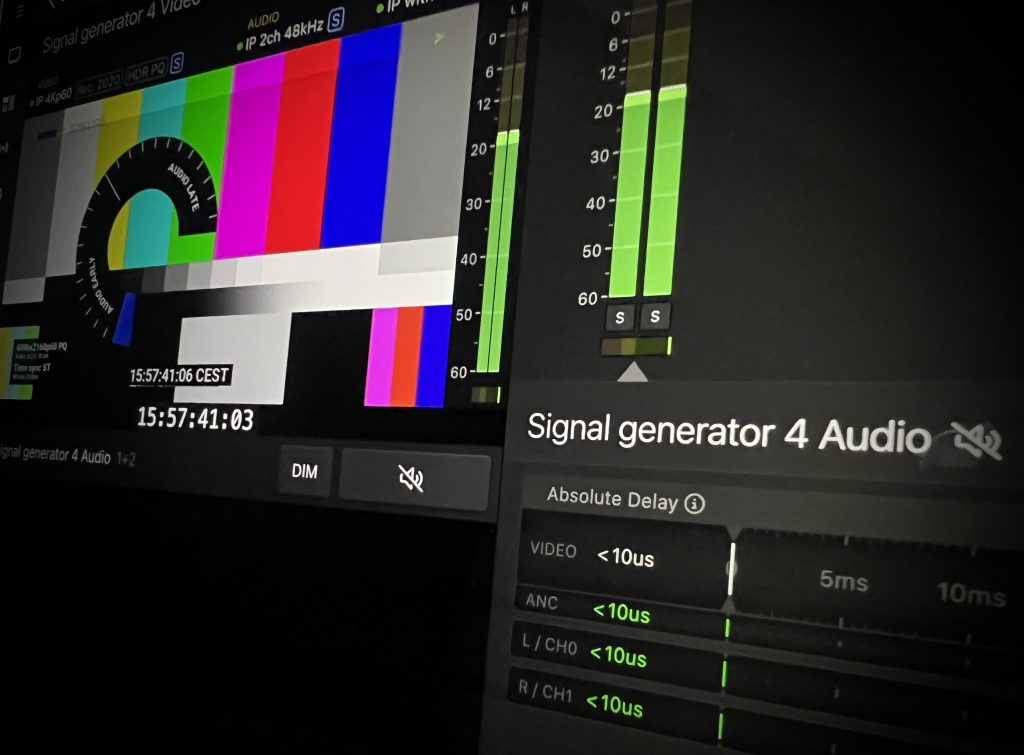Syncing Big: Why Metadata Matters
August 29, 2025
As seen InBroadcast August 2025
There was a time when metadata used to ride in the margins, embedded in the background: far from meta, it felt a little… incidental. But the way we consume content has changed: non-linear, on-the-go, with subtitles, in fluctuating formats and framerates – metadata has stepped into a starring role. It’s the backbone of accessibility, the engine of automation, and the enabler of content monetisation. From captions and ad triggers to immersive audio positioning and multi-screen coordination, metadata is no longer the footnote to the payload – it is the payload.
But with IP-based workflows on the rise, the way metadata streams interweave with video and audio has changed: they travel independently, sometimes arriving with just enough lag to disrupt the flow. This separation introduces a new and critical complexity: synchronising not just sight and sound, but the timing instructions that drive the entire production experience. Aligning AV is still vital – but aligning everything else is becoming just as mission-critical.
Think of it this way: live production is like an orchestra. There are strings, brass, percussion – each playing a different part, each essential to the performance. But it’s the baton of the conductor that brings coherence. In an IP production environment, that conductor is metadata. It carries the cues that keep everything in time: from the moment captions appear to when a sponsor bumper is triggered. If the baton is late, the music still plays, but it doesn’t make sense.
And in that analogy lies the problem. Syncing audio and video alone is like keeping the violin and cello in step while ignoring the conductor’s timing. The production might function – but it won’t impress the audience. It won’t deliver the precision today’s automated, distributed, and immersive productions demand. Without metadata synchronisation, it all starts to drift – and drift in production can mean disaster.
You could call it the domino effect. If metadata is even a frame off, the whole downstream workflow starts to tilt. Captions appear before dialogue. Advert insertion triggers misalign. Loudness corrections mistime. One misstep at the start, and the consequences ripple outward- technical, editorial, legal, financial, and, of course, experiential. This is where true synchronisation – not just of AV, but of everything – becomes non-negotiable.
That’s why Bridge Technologies has expanded its award-winning AV Sync Generator within the VB440 to include ancillary data synchronisation, bringing real-time alignment of metadata streams into the same intuitive, browser-based environment used for underlying AV sync. That AV Sync aspect – already present in the VB440 – was innovative enough: providing a ‘first line of defence’ form of monitoring which embedded physical audio markers directly into the content itself at the point of production: markers which could then be read for alignment later to ensure perfect delivery. Now, the same approach is applied to metadata elements, meaning aspects such as timecode, captions, and signalling can now be monitored, aligned, and managed with the same precision as audio and video, ensuring consistency across complex, multi-stream workflows.

The innovation inherent in this approach is – as Bridge aim to stress in all of their product developments – underpinned by two key concepts: can they not just expand the suite of tools embedded in the VB440, but also ensure that each one is best-in-class? And can they do that in a way that widens access beyond Tier One providers, democratising access to industry leading tools?
As regards the first point, Bridge have aimed to build upon the fundamental innovation of using physical, machine-readable markers and a sync client that visualises deltas in real time, by adding intuitive visual tools like blink-and-beep cues and HDR-compatible colour bars. By adding these small but meaning visual features, Bridge grants operators a full-spectrum, at-a-glance overview of production alignment, even across immersive audio groups and multi-language caption sets. This is synchronisation not as an add-on, but as a foundational principle.
And as regards the second point, regarding the widening of access to these tools, the very concept of industry-wide access is built into the heart of the VB440. Unlike legacy sync solutions (and legacy multiviewers, and legacy audio controls, and legacy signal generators, and legacy production tools in general…), which required bespoke hardware, complex cabling, and dedicated engineering expertise, the VB440 operates entirely under a standard HTML5 browser control. No proprietary infrastructure. No steep learning curve. With up to eight users able to monitor in parallel from anywhere in the world, the VB440 brings a level of agility and collaboration that legacy solutions simply can’t match.
The net result is a true ‘democratisation’ of production. Where once precision synchronisation of AV and metadata was the preserve of Tier One broadcasters with deep pockets and deep benches, now – with the VB440 – Bridge Technologies is breaking down those barriers. Whether you’re producing a global live event or a regional esports stream, the same tools – the same quality of tools – are now within reach. This isn’t about stripping down functionality for mass use. It’s about elevating standards across the board.
In a world where content is more complex, distributed, and automated than ever, synchronisation is no longer a niche technical challenge, and metadata is no longer an afterthought. These days, it’s the linchpin of production success. And with the VB440, it’s finally accessible to everyone.